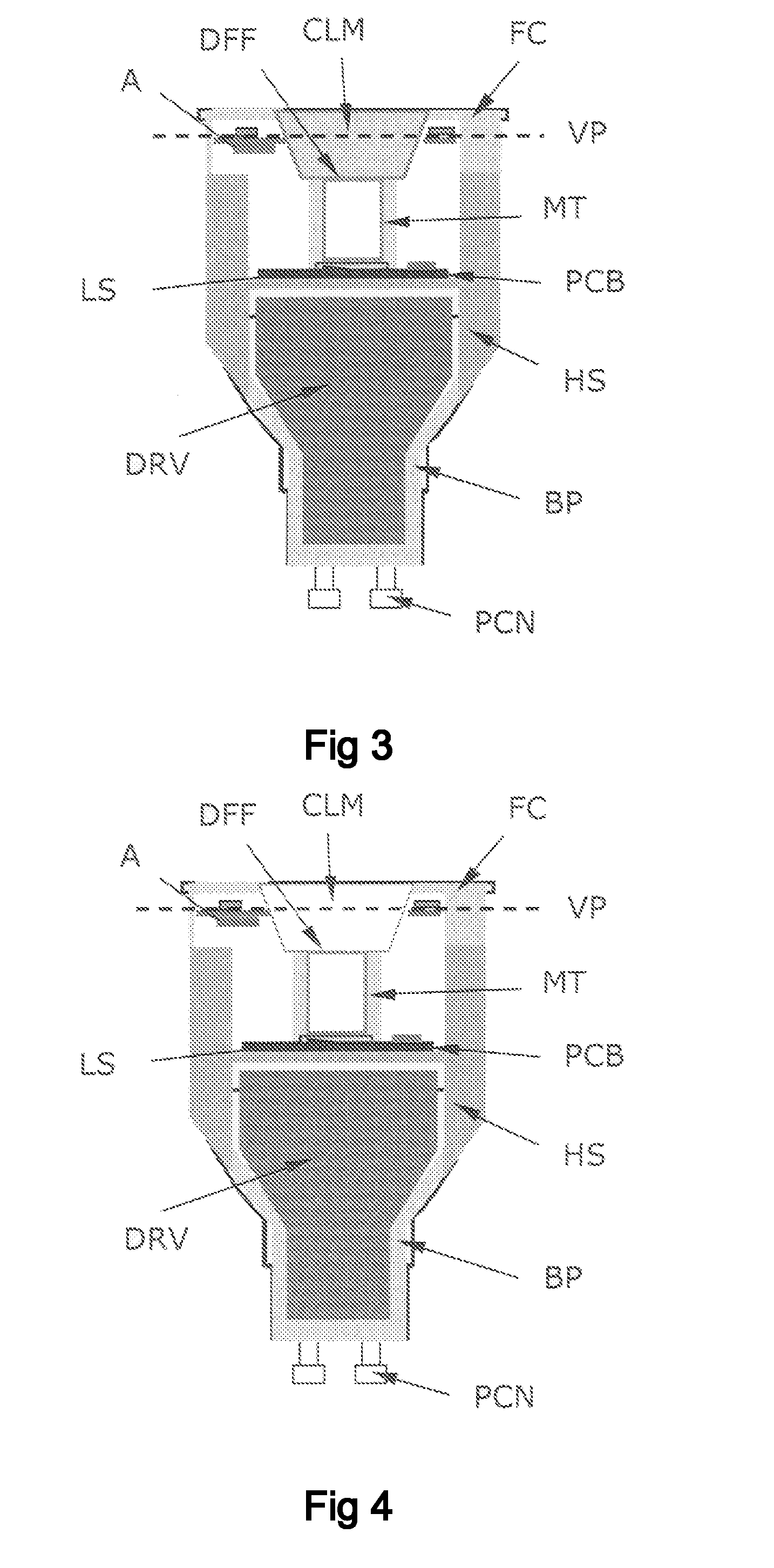Lighting device with built-in RF antenna
- Summary
- Abstract
- Description
- Claims
- Application Information
AI Technical Summary
Benefits of technology
Problems solved by technology
Method used
Image
Examples
Embodiment Construction
[0035]FIG. 1 illustrates a simple sketch of a section through a lighting device embodiment with an outer enclosure ENC in the form of an upper and a lower part, wherein the lower part is a metal housing HS and the upper part UEP is a non-metallic material, e.g. a polymeric material. The metal housing HS serves as heat sink to transport heat away from the light source LS positioned within the enclosure ENC. The light source LS generates light along an optical axis OA, and the light escapes the outer enclosure ENC through a transparent or translucent part of the upper enclosure part UEP. An RF antenna A in the form of a wire antenna is indicated with black color, and the antenna A is connected to an RF communication circuit CC placed within the outer enclosure ENC. As seen, the antenna A is positioned in the upper enclosure part UEP, i.e. above the metal housing HS. The antenna is placed with a distance d between the metal housing HS and a plane through a plane extended by the antenna...
PUM
 Login to View More
Login to View More Abstract
Description
Claims
Application Information
 Login to View More
Login to View More - R&D
- Intellectual Property
- Life Sciences
- Materials
- Tech Scout
- Unparalleled Data Quality
- Higher Quality Content
- 60% Fewer Hallucinations
Browse by: Latest US Patents, China's latest patents, Technical Efficacy Thesaurus, Application Domain, Technology Topic, Popular Technical Reports.
© 2025 PatSnap. All rights reserved.Legal|Privacy policy|Modern Slavery Act Transparency Statement|Sitemap|About US| Contact US: help@patsnap.com



